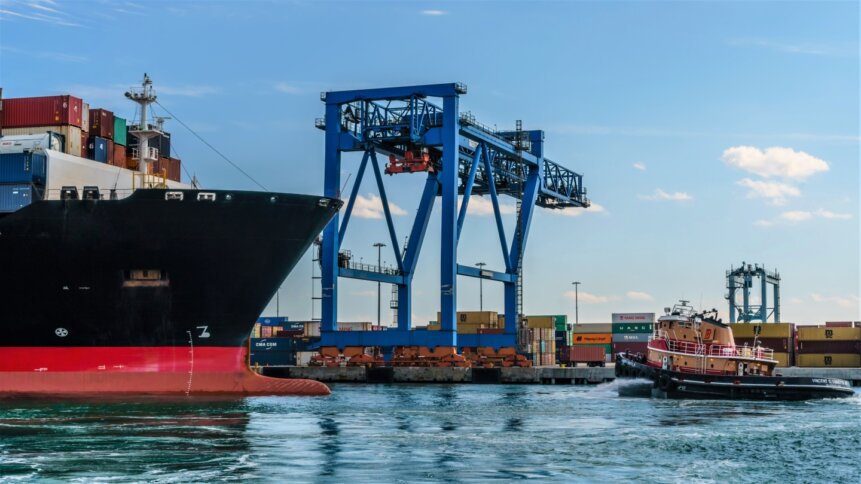Source-to-pay bakes in supply chain resilience

|
Getting your Trinity Audio player ready...
|
The queues of container ships waiting off the coast to unload their goods – a familiar sight at major ports just 12 months ago, as global supply chains were upended by the pandemic – have eased. And costs for firms receiving parts from their suppliers in the far east have dropped dramatically from the eye-watering highs of 2021. “Between September 2019 and September 2021, the cost of shipping a 40’ container from China to the US West Coast had increased from $1,500 to $20,586,” recalls Eytan Buchman of Freightos, a global freight booking platform. Today, waters may appear calmer. But with unknown events ahead, deploying processes such as source-to-pay to bake in supply chain resilience shows foresight.
Progressive procurement
Progressive procurement solutions may not immediately spring to mind as the first choice for fixing supply chain issues. ‘Onshoring’, ‘reshoring’, and even ‘friend-shoring’ are some of the more common buzzwords. But digging deeper into source-to-pay services offered by firms such as DSSI, and other providers, highlights the capacity of managed procurement solutions to keep operations moving. For example, eProcurement platforms that aggregate hundreds of suppliers into a single portal are changing the way that companies purchase their supplies.
As well as the resilience that comes with multiple supplier options, there are often cost savings for firms too. Potential users can benchmark their current pricing against aggregated costs. Systems also bring about benefits in terms of inventory and spend management. Typically, source-to-pay platforms integrate with popular eProcurement systems such as tools offered by Ariba, Coupa, and SAP. Firms don’t need to go it alone on their purchasing journey and can leverage the savings of group buying, with automation software taking care of the heavy lifting.
Done manually, spend-to-pay requires that users step through multiple processes, including vendor location, supplier bids, evaluation and vetting of firms, contract generation, payment, and delivery. But increasingly, these tasks are better served by an integrated platform – especially as pooling information helps with transparency. Suppliers get a heads up on demand, and accommodating multiple departments avoids purchasing becoming siloed and blinkered in large organizations.
Avoiding unwanted surprises
Building supply chain resiliency means eliminating, as much as is possible, any surprises. And, as Sourabh Kothari – Senior Director of Product Strategy within SAP’s Procurement Solutions Portfolio – points out, supplier collaboration, transparency, and 360-degree visibility are major priorities in the source-to-pay space. Knowledge sharing, not just between firms, but across industrial sectors, makes it much easier to plan and forecast demand for goods, services, and resources. Again, doing so helps to dampen down any bumps in the road that may otherwise pop up when visibility is reduced.
Ariba’s supplier discovery network, acquired by SAP a decade ago, facilitates collaboration between trading partners in its goal of achieving “unparalleled supply chain visibility, agility, and resiliency”. For example, tools allow customers to ‘share production forecasts, orders, quality, and inventory information with suppliers and obtain their responses in real time’. Computerized systems also help in onboarding to keep manual administration tasks to a minimum.
Data can also provide valuable insight into whether companies are making progress as intended. Useful KPIs here include metrics that reflect an organization’s agility, such as the number of business hours required to move between requisition and purchase order. And Michael van Keulen, Chief Procurement Officer at Coupa, pegs the best-in-class figure for this at around four hours.
Supply chain resilience playbook
Source-to-pay and other automated payment solutions are just a couple of a growing number of tools that companies can deploy to engineer supply chain resilience into their operations. At a product level, strategies include modularized designs that provide resilience against unforeseen inventory gaps. Products can be configured around a range of swappable parts so that there are fewer bottlenecks and output isn’t as dependent on single suppliers.
Taking this idea further, PCB prototyping software is now available with the capability to advise on component availability. During the design process, developers can use the tool to devise schematics that incorporate components with the shortest lead time. Again, the approach plays to the strategy of keeping all eyes open and striving for 360 degree visibility of supplies.
Different companies will have different priorities, but all firms will want to shield themselves from future pricing shocks. And even today’s less congested container ports could be sending misleading signals. A return to pre-pandemic container pricing gives companies breathing space. But some analysts believe that the reduction in shipping costs may be caused by lower demand, as inflationary pressures bite, rather than because of a full recovery in global supply chains.
The future remains as unpredictable as ever, but that doesn’t mean that enterprises need to carry as much exposure to supply chain disruption as they may have done pre-pandemic. And it’s worth keeping in mind that solutions such as source-to-pay have supply chain resilience baked in.










